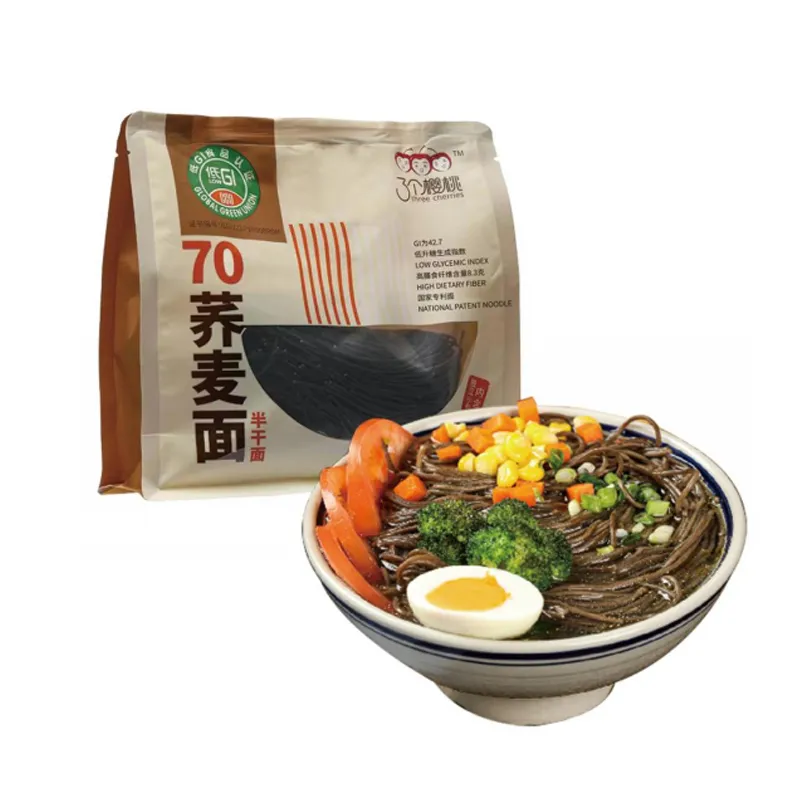fresh udon noodles
The Delight of Fresh Udon Noodles
Udon noodles, known for their thick, chewy texture and versatility, are a staple in Japanese cuisine. Originating in Japan, these delightful noodles have captured the hearts and palates of food enthusiasts around the world. Made from simple ingredients such as flour, water, and salt, fresh udon noodles offer a unique culinary experience that is both satisfying and comforting.
The process of making fresh udon is both an art and a science. Unlike dried noodles, fresh udon requires careful handling to achieve the perfect texture. The dough is often kneaded for a considerable amount of time, allowing the gluten to develop fully. This results in the characteristic chewiness that makes udon so special. After kneading, the dough is rolled out into flat sheets and cut into thick strips. The beauty of making udon is in the freshness; the more recent the noodles, the more pronounced the taste and texture will be.
One of the most appealing aspects of fresh udon is its versatility. Udon can be enjoyed in a myriad of dishes, making it a favorite in many households and restaurants. One classic preparation is udon soup, a comforting dish where the noodles are served in a delicious broth made from dashi—a stock typically made from kombu (seaweed) and bonito flakes. This broth can be seasoned with soy sauce and mirin, elevating the umami flavors in the dish. Toppings such as green onions, tempura, and even a soft-boiled egg can transform a simple bowl of udon into a gourmet meal.
In addition to being served in soups, fresh udon noodles can be sautéed, stir-fried, or used in salads. One popular dish is yaki udon, a stir-fried version where the noodles are cooked with a mix of vegetables, protein, and savory sauces. The grilling process adds a delightful smokiness that complements the chewy texture of the noodles. On the other hand, udon salads can provide a refreshing twist, incorporating fresh vegetables and tangy dressings, making it a perfect dish for warmer days.
fresh udon noodles

Fresh udon noodles are not only delicious, but they also bring a sense of tradition and culture. In Japan, there are many regional variations of udon, each with its own unique characteristics. For instance, Sanuki udon, from the Kagawa Prefecture, is known for its firm texture and is often served cold, with a dipping sauce. In contrast, the Kansai region features softer udon with a more delicate flavor. Exploring these regional differences adds an exciting dimension to the experience of enjoying udon.
Making fresh udon at home can be a rewarding endeavor. While it may seem intimidating at first, the process is straightforward and can be a fun activity for families or friends. With a little patience and practice, one can master the art of udon-making. Moreover, the satisfaction of enjoying a bowl of noodles crafted with one's own hands enhances the dining experience.
For those who prefer a more convenient option, many grocery stores and Japanese markets now offer freshly made udon noodles. These noodles can be a delightful addition to any meal, reducing preparation time while still providing the authentic taste and texture associated with freshly made udon.
In conclusion, fresh udon noodles epitomize the beauty of Japanese cuisine. Their simple ingredients, unique texture, and versatility make them a beloved choice for many. Whether served in a warm bowl of soup, stir-fried with vegetables, or tossed in a refreshing salad, udon noodles bring comfort and joy to the dining table. Exploring the world of fresh udon can lead to delightful culinary adventures, whether you're indulging in traditional dishes, trying your hand at home cooking, or seeking out hidden gems in local restaurants. So the next time you crave something satisfying and delicious, consider reaching for a bowl of fresh udon noodles—an experience that is sure to delight your taste buds and warm your heart.
-
Unleash Your Inner Chef with Delectable Italian Pasta CreationsNewsAug.01,2025
-
Savor Health and Flavor: Irresistible Soba Noodles for Sale Await!NewsAug.01,2025
-
Nourish Your Body with Premium Organic Ramen - A Culinary Delight AwaitsNewsAug.01,2025
-
Elevate Your Dishes with Our Exquisite Kinds of Egg NoodlesNewsAug.01,2025
-
Dive into Flavorful Convenience with Our Ramen OfferingsNewsAug.01,2025
-
Discover Exquisite Types of Naengmyeon and Chilled Soba NoodlesNewsAug.01,2025
-
Is Whole Wheat Pasta Healthy?NewsMay.30,2025
Browse qua the following product new the we

















































































































